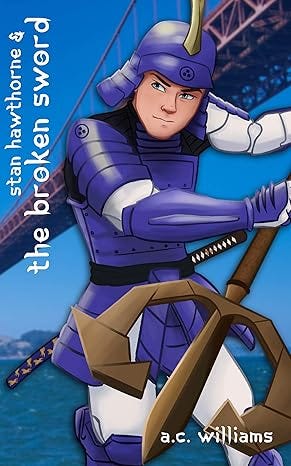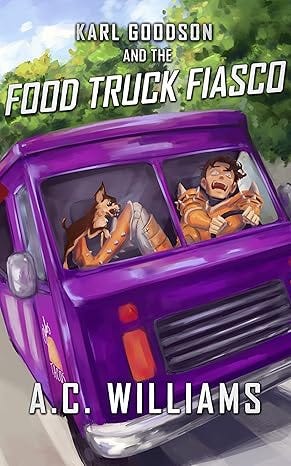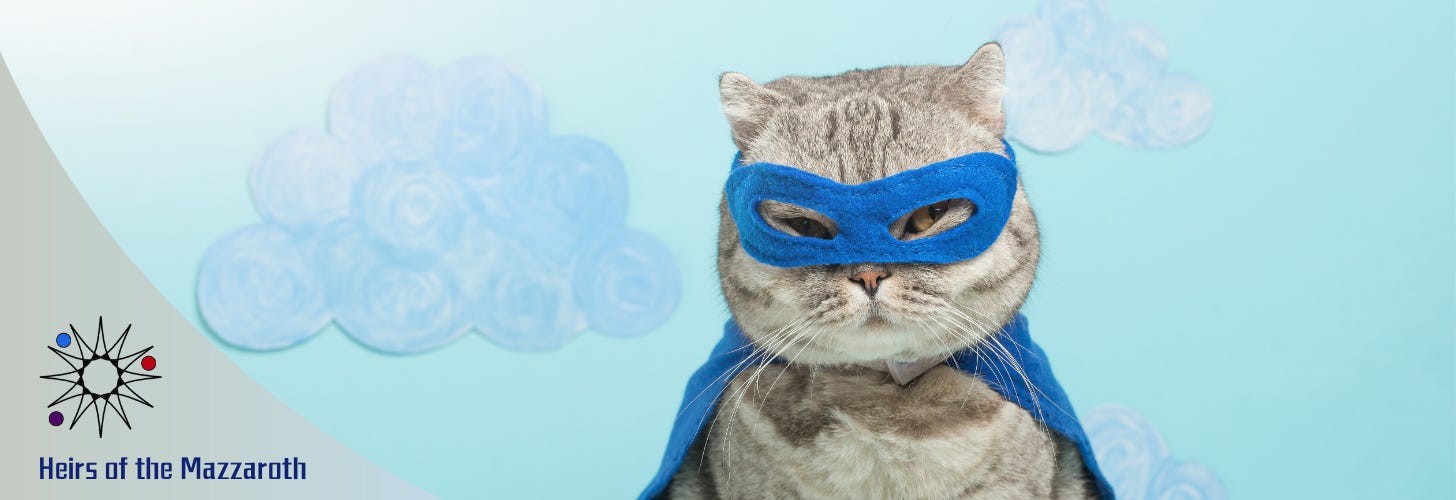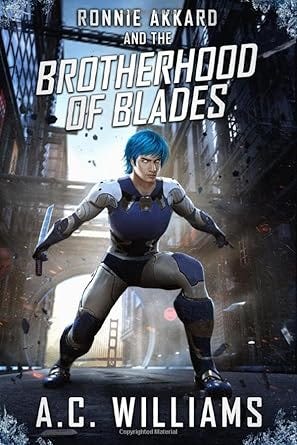Superheroes need origin stories (apparently)
Know the promises you are making to your audience in your marketing, and make sure that your story fulfills that promise. Otherwise your readers will get grouchy. And no author wants a grouchy reader!
Before you ask, no, I don’t have any superhero cats … yet.
I saw this stock photo and it made me laugh, so I grabbed it. I hope it made you laugh too. And it’s sort of related, because we ARE talking about superheroes today. But more specifically, we’re going to talk about the superhero genre of fiction.
When I first started writing my crazy adventure series, I didn’t care about genre. I was writing what I wanted to write. Categories or classifications didn’t even occur to me. I was playing, having fun, and writing like a crazy person. It was only a wild-eyed fantasy of a dream that they’d one day be published (with enough of an actual fan base that I get fan art!).
But when I decided to start publishing these stories, I realized that I needed a genre for them. Genre is so much more than a box that people try to jam creative expression into. Without a genre classification, bookstores don’t know how to sell your books. Without a genre, online retailers don’t know where to list your book’s product page. Without a genre, your audience won’t know where to even find your book.
Let’s do a little test: Set a timer for one minute and forty-two seconds. Stand up and stretch. Take a drink of water. Whatever you want to do for one minute and forty-two seconds.
Did you do it?
Awesome! Do you know what happened at the end of that one minute and forty-two seconds? A new book was published on Amazon. Every one minute and forty-two seconds, another book will be added.
There are currently 32.8 million books on Amazon. How can your one little book stand out among all of those? How can anyone even find your book in that rat’s nest of books?
Well, the best way to be found on Amazon is to make sure your story actually fits in the genre where you’re promoting it.
This was the problem when I first started publishing. The superhero genre was big in graphic novels, obviously. And it was huge in movies. But it wasn’t so big in novels. In fact, if you looked up “superhero” on Amazon, you’d get several thousand results that were mostly romance (super spicy romance, at that).
So you can imagine my excitement when the superhero genre on Amazon actually began to reflect adventure-style stories! I added my books and waited for the reviews to roll in.
Well. Some did. But my superhero stories didn’t take off like I expected they would. I knew there would be some hesitation because they are a series. I also anticipated some slowness because of the general aesthetic of the books (very anime inspired, which remains a very niche sort of thing).
What I didn’t expect was some of the feedback I received: “It’s okay, but there’s no origin story.”
Yes. I know. I did that on purpose.
But you see, when you tell people you’ve written a superhero novel, they expect that you’re going to see how your main character got their powers in book one. That’s how most superhero stories go. It’s the expectation of the genre. It’s what readers are looking for.
But that’s not what I wrote. For my stories, I knew starting with the origin stories of the characters was going to drag a lot of the primary action down. Because of the scope of the overall series, it just wouldn’t work.
So if readers expect that a superhero novel will include an origin story—well I guess that means I don’t write superhero novels! LOL! I write adventure series with superhero characters?
All of that to say, be sure that you have researched the expectations of the genre you are planning to write in. Because a genre is a promise. Know the promises you are making to your audience in your marketing, and make sure that your story fulfills that promise. Otherwise your readers will get grouchy.
That’s the wise way to do this. But if you want to do it backward, upside-down, and sideways like I did, you have to start with your local audience first. Build your audience with face-to-face interactions where you can share your vision for your series in person. Readers will always get more excited when they can hear an author’s vision for a series.
That’s what has happened with my superheroes. Regular marketing and advertising hasn’t worked, but every time I do a live event, I sell a bunch of them.
That being said, I have learned my lesson, and I’m very excited to announce that one of my primary projects in 2025 is writing an official origin story for the Reishosan. I wrote one many, many moons ago, but I never released it. So I’ll be revising it and hopefully releasing it later this year.
In the meantime, I figured I’d share a little about the series in case you’re interested. There are three separate book series contained in the overarching Heirs of the Mazzaroth series:
The Legend of the Lightkeepers
Reishosan: Samurai Defenders
The Dragons of the Diamond Throne
Each series follows a different superhero team, but along the way, some of them crossover and team up with each other.
Technically The Legend of the Lightkeepers is the first series, but it has a complicated origin story of its own. The Dragons of the Diamond Throne is the latest series, with its first book launching October 2024. The middle series, Reishosan: Samurai Defenders, is the series with the most books complete so far. So that’s where we’re going to start today.
In Reishosan: Samurai Defenders, five young men from very different life situations are given elemental samurai armors without instruction manuals. They have to learn how to use their mysterious, semi-sentient armors to defend the world from an interdimensional tyrant bent on taking over, but at the same time they have to figure out how to get along with each other.
Reishosan: Samurai Defenders is the found family trope at its funniest, with a hilarious focus on struggles both personal and interpersonal. Primarily set in San Francisco in the year 2010, the series follows these five crazy chaotic guys from one disaster to another. Some disasters aren’t their faults; other disasters totally are.

Stan Hawthorne and the Broken Sword is the first book released in the series, and it’s technically a novella. Stan, who wields Reishosan Kagami, is fourteen years old. He’s British. A prodigy on the violin. And if the Great British Baking Show had existed in 2010, he would have won it.
Ronnie Akkard and the Brotherhood of Blades is the second book in the series. It is a full-length novel that really digs into the five guys and their interpersonal struggles. Ronnie’s story is the main story, though, as he wrestles with his place in their bizarre little family and whether sticking around is worth it. Ronnie is a tough cookie. He grew up on the streets of the Bronx, and he’s always been a loner. So joining a team of guys who don’t like each other and don’t actually want to work together isn’t his cup of tea (not that he drinks tea … that’s Stan).

Karl Goodson and the Food Truck Fiasco is the third book in the series. It’s also a novella, and—full disclosure—it was originally released for free to my email list. But everyone loved it so much, they asked for it to become a published book. Karl is my samurai guy from Oklahoma. On the surface he fills the traditional buffoon role on the team, but there’s a lot more to him than meets the eye.
Fun fact: All the stories in the Heirs of the Mazzaroth series are written as ensemble cast stories. There are always at least four different primary point of view characters in every book (usually mixed in with an additional four to six extra side POVs). However, the novellas are always a singular point of view. EXCEPT for Karl’s. Karl’s novella is a mix of all the perspectives, mostly because Karl is so chaotic all the time I couldn’t stay in his perspective the whole time and actually accomplish anything. (I’ve been told Karl is ADHD, and I absolutely believe it.)
None of these stories include the characters’ origins. They all start somewhat in the middle of all the action, and I fill in the gaps as we go.
So be warned! They are superhero books, but they aren’t structured like traditional superhero stories.
If 2025 goes they way I hope, I should have their origin story novel out before the end of the year. Additionally, I am aiming to have the second full-length novel, Sam Logan and the Sword of the Sun, out in summer 2025.
So watch this space, because words are happening. You can get more information on where to buy the books on my website or by clicking the images or links in this article.
Be sure to keep your eyes peeled for next week’s post, where I’ll get into the details about why the very first book of the Reishosan series (Stan Hawthorne and the Broken Sword) doesn’t sound like the first book in a series.
Thanks for stopping by!
Amy







